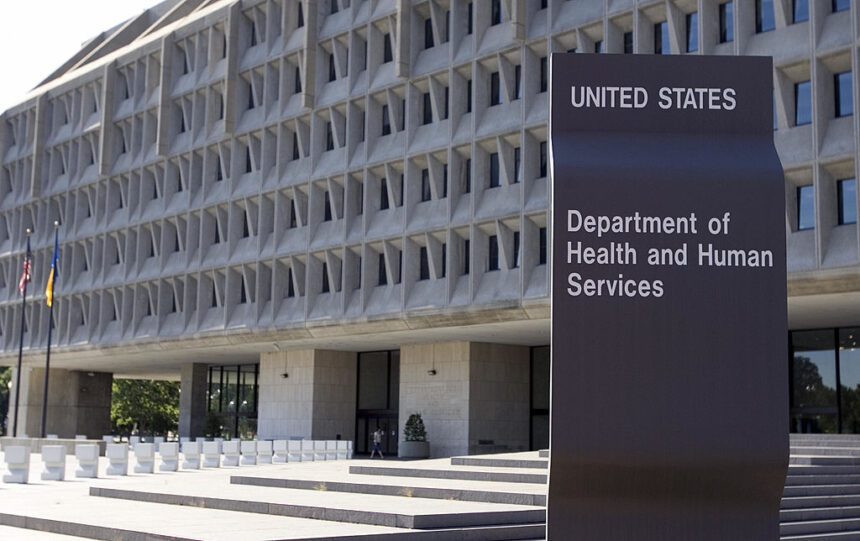The copay accumulator case took yet another turn last week, with plaintiffs filing an appeal and a brief arguing that the government must enforce a recent court ruling.
In September, three patient groups convinced a district court to strike down a federal rule that had empowered insurers to use so-called copay accumulators.
However, the decision — which in theory limited plans from not counting drug copay assistance toward members’ deductibles and out-of-pocket maximums — spurred the Biden administration to double down.
Not only did federal health authorities request a clarification in which they announced their refusal to enforce the ruling, but they also filed an appeal.
Last week, the three patient groups filed an appeal of their own, in the U.S. Court of Appeals for the D.C. Circuit, seeking to compel the government to abide by the court’s conclusion.
“We submitted our brief on why the judge should reject the government’s motion to clarify and that they just cannot choose to enforce or not enforce a decision,” explained Carl Schmid, executive director of the HIV + Hepatitis Policy Institute, which was joined by the Diabetes Leadership Council and the Diabetes Patient Advocacy Coalition.
A request to return
To hear Schmid tell it, what was more surprising than the government’s choice to appeal was its request for clarification, in which health officials essentially said they’re not going to oblige insurers to fall in with the judge’s decision that copay assistance has to count for branded drugs that don’t have a generic equivalent.
“That was kind of a shocking move for them to do,” he said. “I mean, the judge was pretty clear.”
Indeed, in its September 29 memorandum, the court ordered that the 2021 Notice of Benefit and Payment Parameters (NBPP) “is vacated.”
That should have returned the previous version of the NBPP into force “under well-established doctrine,” plaintiffs argued in a legal brief. The earlier rule permits manufacturer assistance to be excluded from cost-sharing amounts only with respect to brand drugs that have a generic equivalent.
Many patients rely on copay assistance from manufacturers to afford their drugs. The amount of such assistance totaled nearly $19 billion in the U.S. last year, according to a recent report from IQVIA which found patient out-of-pocket costs rose $3 billion to $82 billion.
Overall, 7% of patients reached annual out-of-pocket (OOP) costs above $500, IQVIA noted, although commercially insured patients saw lower OOP costs than those on Medicare/Medicaid due to benefit designs and use of co-pay coupons or vouchers.
In addition to arguing that the Department of Health and Human Services must enforce the copay accumulator decision, plaintiffs’ response to the government’s motion for clarification contended that the previous, more restrictive 2020 NBPP rule is now in effect.
“The court should explicitly reject the government’s request,” their brief added. “That course of conduct is unlawful, and the court should not sanction it.”
Change could take a while
The government’s rebuttal was due Monday, after which time plaintiffs will have another chance to respond. The judge is due to make a final ruling in January.
“We feel confident that we will prevail and that the judge will say, ‘HHS, you have to enforce the 2020 Notice of Benefit Payment Parameters rule,’” said Schmid.
Unless HHS wants to promulgate a new rule, that is.
Judge John D. Bates had left the door open for the government to issue new regulations with respect to the definition of cost-sharing, specifically whether copay assistance is included or not.
It could take quite some time for any new guidelines to be forthcoming, however, especially with a presidential election year coming up. This is why the plaintiffs stressed the need to comply with the previous version of the regulation.
“We feel that’s the law of the land,” said Schmid. “Not only should the federal government be enforcing it, but also state insurance commissioners should be enforcing it as well right now.”
The government had yet to respond to a request for comment from MM+M.
Moreover, as plaintiffs point out in their brief, HHS has not requested a stay of the order. Thus, the district court’s order is still in effect. If the patient groups prevail in their appeal, their victory in the lower court will stand and will have to be enforced.
Last week, a bipartisan group of members of Congress, including Reps. Earl L. “Buddy” Carter, (R-Ga.), and Nanette Diaz Barragán, (D-Calif.), sent a letter to the Biden administration signed by 48 representatives to voice their disappointment in the government’s legal challenge regarding copay accumulators.
“We believe it would be beneficial to our constituents if a notice was quickly issued reaffirming the 2020 NBPP final rule that group health plans and health insurance issuers must count copay assistance toward the patient’s [maximum annual limitation on cost sharing] for drugs that do not have a medically appropriate generic equivalent available,” they wrote.
“We believe [copay accumulator adjustment programs] permit health plans, PBMs or third parties to profit from copay assistance undermining the intended impact of this type of assistance, which helps eligible patients afford their out-of-pocket costs at the pharmacy counter and can significantly improve patient adherence to medicines,” the lawmakers added.
With additional counter briefs, amicus briefs and oral arguments no doubt on the way, the case could drag out well into next year. In the meantime, with insurers holding by the 2021 rule, Schmid says he’ll look at vendor data on use of copay assistance to gauge the real-world impact.
“I’ve heard from patients already saying, ‘We don’t have any accumulator anymore,’ but if there’s no enforcement [of the ruling], there may be a need for patients to take legal action on their own in the future.”
To read a January 2024 article about a district judge reiterating the decision to limit copay accumulators, click here.







